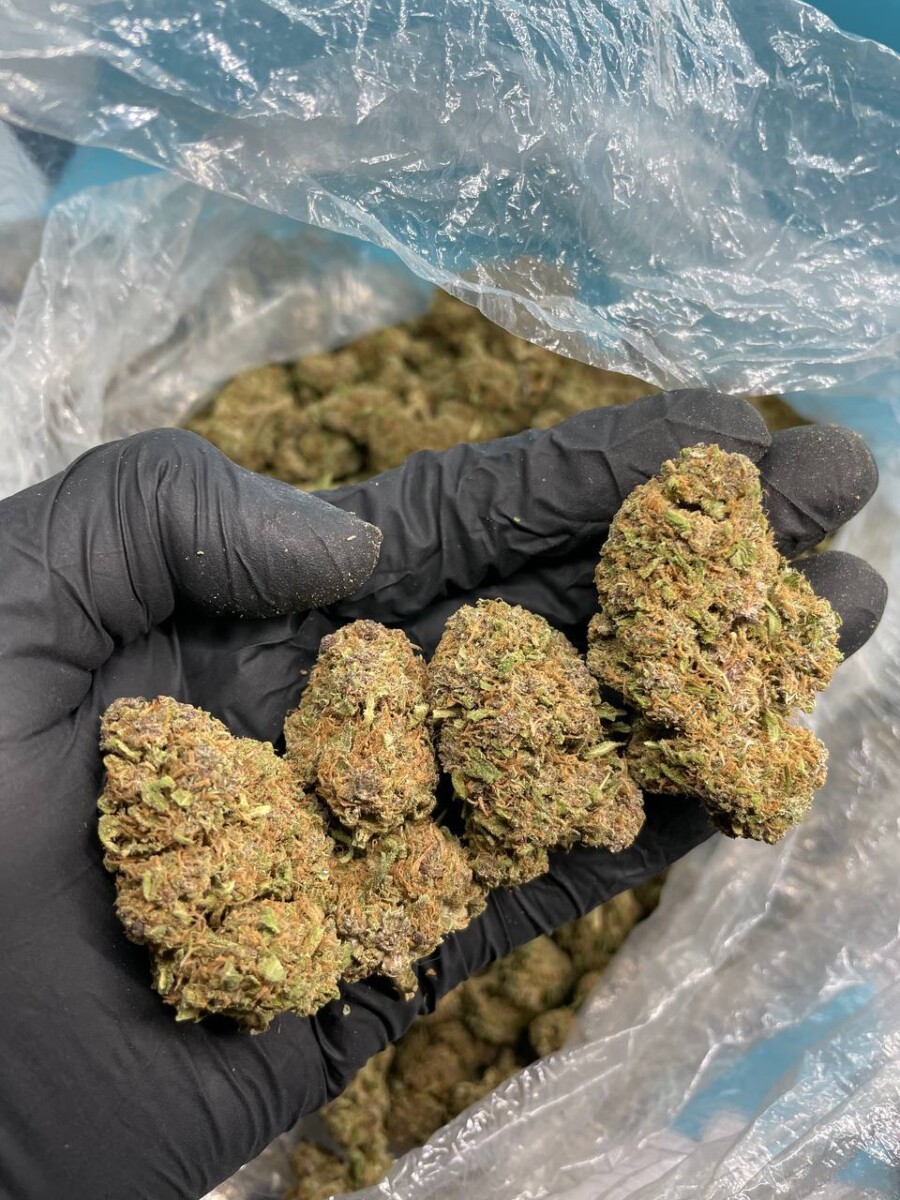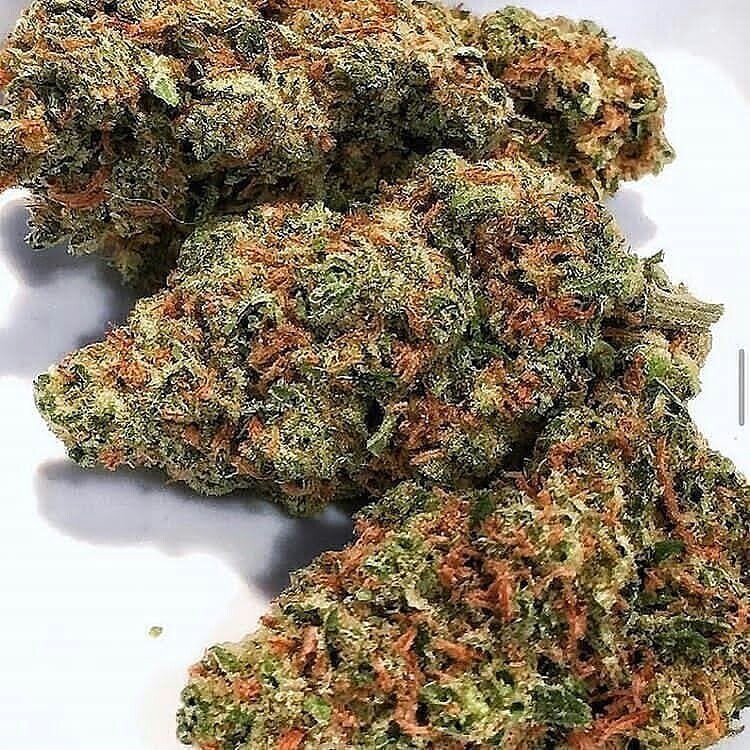Blueberry strain
$125.00 – $1,000.00Price range: $125.00 through $1,000.00
Blueberry strain is a popular, flavor-forward indica hybrid with a strong genetic backbone. It is a three-way cross between an indica Afghani parent and sativa Thai and Purple Thai variant parents. Blueberry strain was originally developed in the 1970s or 80s by DJ Short, a mysterious but prolific breeder who’s been dubbed the “Willy Wonka of pot.” Blueberry strain is distinguished by an unmistakable fresh blueberry weed smell and taste that have made it an enduring favorite. Blueberry weed strain is popular nationwide. It won top marks in the 2000 High Times Cannabis Cup for Best Indica and best strain overall. Blueberry strain has a THC content that ranges between 15% and 24%.
Blueberry strain is a popular, flavor-forward indica hybrid with a strong genetic backbone. It is a three-way cross between an indica Afghani parent and sativa Thai and Purple Thai variant parents. Blueberry strain originally developed in the 1970s or 80s by DJ Short, a mysterious but prolific breeder who’s been dubbed the “Willy Wonka of pot.” Blueberry strain is distinguished by an unmistakable fresh blueberry strain smell and taste that have made it an enduring favorite. Blueberry strain is popular nationwide. It won top marks in the 2000 High Times Cannabis Cup for Best Indica and best strain overall. Blueberry has a THC content that ranges between 15% and 24%.
Flowers of this strain are small and densely-packed, as one might expect of an indica-dominant variety. The compact forest green leaves are often flecked with traces of purple and red. These latter colors develop due to high concentrations of pigments called anthocyanins in this strain’s genetics — as the plants are exposed to colder than average temperatures during the growing period, these pigments are activated, bringing out colorful hues. The leaves are coated in almost transparent trichomes, which may be harder to see than that milky or amber-colored glands covering similarly resinous strains. Nevertheless, buds of Blueberry are very sticky and may be difficult to break up by hand without the use of a grinder. This strain’s bag appeal isn’t just limited to its eye-catching hues — when cured properly, the flowers immediately give off an aroma of fresh blueberries. This sweet and slightly tart smell bears some resemblance to the odor of the Purple Thai parent strain. Breaking open buds of Blueberry gives off some more complex scents of spice and musk, reminiscent of Afghani varieties. When buds are directly combusted, some skunkiness is evident. Smoke is surprisingly smooth for an indica, and has a sweet blueberry taste on inhale and exhale with no lingering funk.
Often described as a “one hit and quit” strain, Blueberry is notably potent, even for experienced cannabis enthusiasts. Users are quickly struck with a sense of physical heaviness that may be disorienting in situations that require mobility or coordination. In relaxed settings, this physical sensation can translate into a therapeutic calmness, allowing users to unwind after a long day or week of work. The sativa genetics confer some slight mental effects, but these take the form of euphoric uplift more than of cerebral thoughtfulness; smokers may feel chatty or even giggly. In high enough doses, Blueberry will leave users heavy and couchlocked — this is not an ideal strain for productivity and is better suited to tranquil evening use. Medically speaking, Blueberry has almost narcotic properties. It is of use to those with pain conditions — both short-term pain due to injury or exercise or long-term chronic pain related to disease or nerve damage. It can also help relieve some of the troubling symptoms of stress, anxiety and PTSD, creating a physical relaxation strong enough to ease a racing, pre-occupied mind. Most notably, Blueberry can induce a deep and lasting sleep and therefore serve as an antidote to entrenched insomnia. Side effects of this strain include the typical dry mouth and red eyes. Its heaviness can also result in droopy, unfocused eyes. As noted, a little bit of Blueberry goes a long way and its high is said to last longer than average.
Blueberry can be grown as a clone, if clippings are taken from mature and healthy plants. Growers can also buy seeds. Creator DJ Short has legal claim to the “ancestral and parental breeding stock and intellectual development rights” — but the nature of the cannabis market is such that DJ Short has no control over his seeds once they’ve been sold, meaning that competitors like Dutch Passion are free to experiment with Blueberry’s genetics and sell their own proprietary seeds under the same name.
Blueberry can be grown indoors or outdoors, but outdoor growing demands restrictive conditions like moderate humidity and consistent daytime temperatures between 72 and 80 degrees Fahrenheit. Plants are well-suited to indoor cultivation, as they grow short and bushy — rarely exceeding 3.5 feet in height — with strong lateral branching. They also have a very favorable leaf-to-bud ratio, meaning that they require minimal trimming of broad fan leaves. Growers looking to bring out the vibrant lavender to red accents in Blueberry’s leaves should artificially “shock” the plant by introducing cold temperatures late in vegetative stage, just before flowering. Plants flowers within 8 to 10 weeks when grown indoors and are ready for harvest in mid October outdoors. When mature, Blueberry has a moderate to high yield, offering about 1.5 ounces of flower per square foot of plant.
Perfect for mellow nighttime use, Blueberry is a great choice for those looking to unwind alone or with an intimate group of familiar friends. Its combination of restorative physical relaxation with a mildly hazy head high is matched by standout flavors. Blueberry’s enviable genetics have been used to crossbreed popular strains like Blue Dream and Blueberry Kush.
| Quantity | Oz, Qp, Hp, 1pound |
|---|
Related products
Indica Strains
Indica Strains
Indica Strains
Indica Strains
Indica Strains
Indica Strains
Indica Strains
Indica Strains















